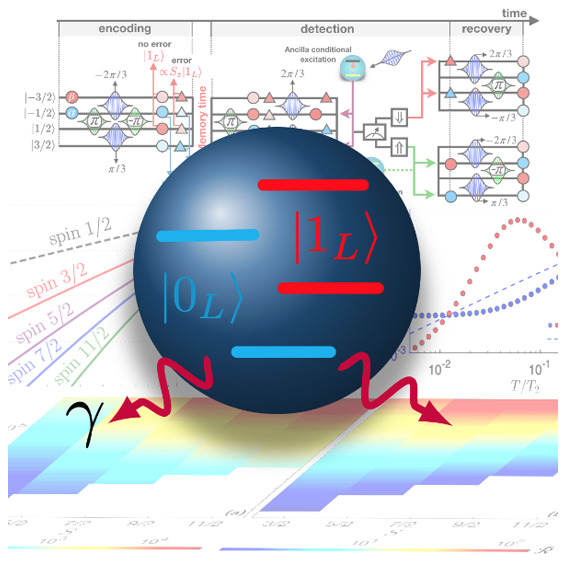- Record: found
- Abstract: found
- Article: found
Molecular Nanomagnets as Qubits with Embedded Quantum-Error Correction

Read this article at
Abstract

We show that molecular nanomagnets have a potential advantage in the crucial rush toward quantum computers. Indeed, the sizable number of accessible low-energy states of these systems can be exploited to define qubits with embedded quantum error correction. We derive the scheme to achieve this crucial objective and the corresponding sequence of microwave/radiofrequency pulses needed for the error correction procedure. The effectiveness of our approach is shown already with a minimal S = 3/2 unit corresponding to an existing molecule, and the scaling to larger spin systems is quantitatively analyzed.
Related collections
Most cited references72
- Record: found
- Abstract: not found
- Article: not found
Quantum supremacy using a programmable superconducting processor
- Record: found
- Abstract: found
- Article: not found
Quantum Computing in the NISQ era and beyond
- Record: found
- Abstract: found
- Article: not found